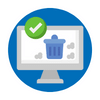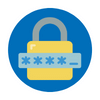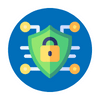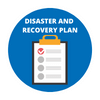14 Cyber Hygiene Tips to Keep Your Business in Tip-top Shape
April 6th, 2022 | 4 min. read

Are you cyber-healthy?
That may be a question you don’t hear quite often. Usually, when talking about health, the first thing that comes to mind is physical or mental well-being. But, this post, in particular, will expound on your cyber health and everything you need to know to keep your business’ cybersecurity posture in tip-top shape.
Good cyber health is necessary to ensure the longevity of your business. However, in order to look after your cyber health, you will need to follow a strict cyber hygiene routine.
At ITS, we know and understand how important cyber health is for everyone, ourselves included. As a managed service provider, we ensure that our clients have holistic strategies and routines that can protect them from any harm and can help maintain a healthy cyber environment.
In this article, we’ll delve into the fundamentals of cyber hygiene with the following key points:
- What is cyber hygiene?
- Benefits of maintaining a proper cyber hygiene
- 14 cyber hygiene tips to practice in your organization
What is cyber hygiene?
 In a nutshell, cyber hygiene is practicing good habits to help keep data safe and protect your devices from hackers and outside attacks. Think of it as personal hygiene for your devices. Except you don’t brush it, floss it, and wash it; instead, you create a routine that is good for your cyber health. This may include:
In a nutshell, cyber hygiene is practicing good habits to help keep data safe and protect your devices from hackers and outside attacks. Think of it as personal hygiene for your devices. Except you don’t brush it, floss it, and wash it; instead, you create a routine that is good for your cyber health. This may include:
- Regular updating of software,
- Choosing strong passwords for your accounts,
- Or conducting cybersecurity training for your team, among others.
As it is a routine, you’ll need to do it on a regular basis and may change according to your growing needs.
Benefits of maintaining a proper cyber hygiene
The benefits of a cyber hygiene program can be hard to quantify on the get-go.
That’s because it’s hard to measure the impact of keeping your data safe, having devices running at optimal efficiency, decreasing the risk of vulnerabilities, and preventing cyber-attacks unless any of it is compromised due to lack thereof. This means you will only see the benefits of having one when something bad comes up.
However, just like in personal hygiene, if you strictly follow a routine, you may never see the downsides, ever.
To give a concrete answer, though, generally speaking, practicing good cyber hygiene strengthens your security posture, reducing the risk of data breaches.
14 cyber hygiene tips to keep your business in tip-top shape
So, how do you practice cyber hygiene? Consider these tips:
 1. Stay on top of your business management and technology tools
1. Stay on top of your business management and technology tools
Identify, document, and analyze the hardware, software, and applications you are utilizing.
 2. Completely wipe any hardware that you are not currently using
2. Completely wipe any hardware that you are not currently using
If you will not be using the equipment in the future, consider disposing of it.
 3. Do a regular cleanup
3. Do a regular cleanup
Remove data, files, and information that is no longer needed to free up storage. In the same way, delete or uninstall any software or applications you are not regularly using.
 4. Update your software
4. Update your software
Update and install necessary patches for all software or applications that are in use–across all devices. Doing so ensures that your system is running the latest version and repairs security holes and bugs that have been discovered in the previous one.
 5. Centralize existing applications
5. Centralize existing applications
If you are using multiple applications to accomplish a similar function, consider streamlining and reducing duplicates.
 6. Change passwords or passphrases at regular intervals
6. Change passwords or passphrases at regular intervals
This might be the most common way to help secure your data. By regularly changing your password, you reduce the risk of someone else gaining access to your accounts. In addition to that, you should also refrain from using or reusing the same password across devices or services. Keep them fresh and unique.
 7. Monitor internal security
7. Monitor internal security
Review the antivirus and malware software that is installed to ensure it is up-to-date and functioning properly. If, in any case, there’s no antivirus and malware software at hand, review available options, and install immediately.
.png?width=100&name=MFA%20icon%20(2).png) 8. Incorporate multi-factor authentication (MFA)
8. Incorporate multi-factor authentication (MFA)
And ensure your team members are using it. MFA enhances your organization’s security by requiring everyone to identify themselves beyond username and password when accessing a company site or account.
 9. Employ device encryption
9. Employ device encryption
This helps protect sensitive corporate data, both at rest and in transit.
 10. Back up your data
10. Back up your data
Experts suggest following the 3-2-1 rule, wherein you store three copies of your data on two different kinds of media, with one copy stored off-site. It would be best to do this to an offline hard drive or to a secure cloud environment, whichever works for you.
 11. Control access and authentication
11. Control access and authentication
Regularly review who admin privileges have been granted to and remove contacts that no longer need these privileges. Identify team members that have left the company in the past year and ensure their credentials and access have been shut down.
 12. Develop an IT disaster recovery plan
12. Develop an IT disaster recovery plan
A disaster recovery plan is essential to keep your business operating after any disaster, whether due to human error or a natural calamity. It outlines a strategy that can help you mitigate financial losses, restore data, and inform your team what to do in case of emergencies.
 13. Host cybersecurity awareness training
13. Host cybersecurity awareness training
Everyone’s participation when it comes to the organization’s cybersecurity efforts is critical to guarantee success. One way to do it is by holding quarterly cybersecurity training or sending out constant reminders.
The training could also be a venue to reassess your cybersecurity and determine holes and risks so you can collectively plan a strategy to combat them at once.
 14. Establish a cyber hygiene policy
14. Establish a cyber hygiene policy
Finally, draft a policy that details how to handle the above task and make sure to assign a specific person who will handle them.
Ready to improve your cyber hygiene routine?
Practicing good cyber hygiene should come as second nature, not just something you do when you find the time. But of course, the beginning is always the most challenging part. Fortunately, you don’t have to do it all alone.
Here at ITS, we’ve helped hundreds of businesses bolster their cybersecurity. If you need help assessing your cybersecurity posture and creating cyber hygiene that fits your type of business, you may contact us today.
Jess is a Content Writer who commits herself to creating helpful, relevant, and easy-to-digest technical articles. When she isn't writing, she devotes her energy (and money) to collecting K-Pop photo cards, which she likes to call an 'investment.'
Topics:
